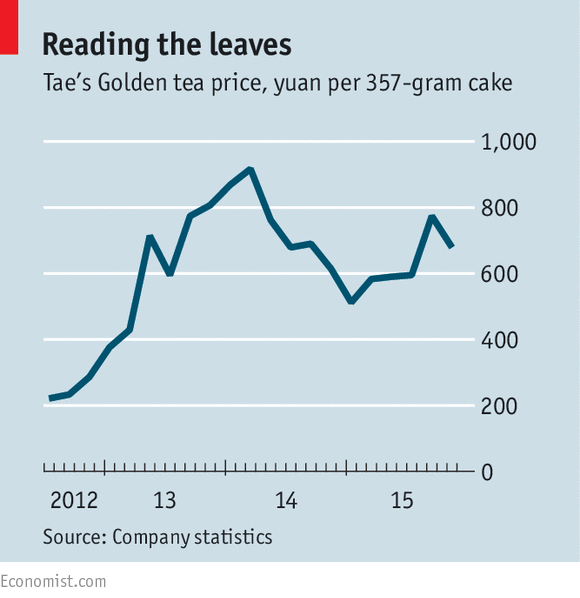
Works by Forrest Bess at the 2012 Whitney Biennial.
SHELDAN COLLINS/COURTESY WHITNEY MUSEUM OF AMERICAN ART, NEW YORK
The peculiar appearance of Forrest Bess, the “pseudo-hermaphrodite” painter, at the
2012 Whitney Biennial still stands out in my memory. The eleven paintings were vivid and haunting, and his story of genital self-surgery, with accompanying photo-documentation, was even harder to forget. In a further strangeness, his work and personal effects were presented not by the show’s official curators—Elisabeth Sussman and Jay Sanders—but by a fellow artist, Robert Gober. Of course, the most startling eccentricity was that Bess was in the biennial in the first place, having been dead for 35 years.
Bess wasn’t the only dead artist making a cameo in the hands of a living artist. In that same biennial, Werner Herzog gave the work of Hercules Segers, who died in 1638, a soundtrack from the (living) Dutch musician Ernst Reijseger, and Nick Mauss used a Marsden Hartley painting as part of an intentionally out-of-time installation comprised of various materials from the 1930s. But if these artist-curators used older materials to make contemporary art, Gober went much further—he used older materials to make a contemporary artist.
Importantly, Bess, who had had a solo exhibition at the Whitney in 1981, wasn’t presented as a historical rediscovery; nor were his paintings shown in isolation, so as to appear sui generis or “fresh.” The alchemical magic of the display was that the personal and historical material—the infamous “after” shot, along with Bess’s correspondences with Betty Parsons, his dealer, and with the art historian Meyer Schapiro—were leveraged to make not just the artworks but the artistic figure himself relevant to the present moment.
Reviewing the show in 2012,
New York Times critic
Roberta Smith observed that Gober’s project “proffers Bess as a kind of foundational artist of our time,” but four years later, it’s Gober’s curatorial maneuver that seems even more foundational. Bess remains an important “contemporary” figure, but everywhere you look, shows of the living are being used to bring back the dead.
Among the many departed participants in the
2014 Whitney Biennial was Matt Hanner, who died in 2011 of a brain aneurism and was represented as Stephen Lacy’s contribution to the show. The
2014 edition of the Hammer Museum’s biennial, “Made in L.A.,” devoted an entire room to the work of Tony Greene, who died in 1990, as the focus of a show-within-a-show called “Amid Voluptuous Calm.” (Greene was also included in the Whitney Biennial in 2014, where artists Richard Hawkins and Catherine Opie, former CalArts classmates of Greene’s, curated his work jointly.) By the time that the
fourth iteration of “Greater New York” opened, this past September—with the long-dead given notable prominence in the realm of the living—it became clear that making the work of the deceased “contemporary” constituted an undeniable curatorial zeitgeist.
These big periodic group exhibitions used to be exclusively about gathering current work from living artists, so much so that we never had to think of “the living” as their natural category of inclusion. Recently, however, all these shows have proven very welcoming to the dead.
The dead were present in significant numbers in last year’s Whitney Biennial. In curator Anthoy Elms’s selection, Joseph Grigely arranged The Gregory Battcock Archive (2009–14), a kind of living library that was meant to qualify as contemporary.
In Grigely’s intriguing room, the single surviving Battcock painting recalled the critic’s stint in object making, but the other materials—photographs, manuscripts, correspondence detailing his sexual conquests—compelled viewers to see Battcock as more than a critic. In the context of the biennial, the remnants of Battcock’s writing and acting, gathered together 35 years after his still-unsolved murder, suggested that his various creative activities might be recategorized as artistic practice by today’s standards. Indeed, the display itself was also to be seen as art, with the Whitney’s official text describing Grigely’s vitrines as “a modular sculpture that is also a form of storytelling.”
Though sourced from a different era and radically different in content, Marc Fischer’s presentation of Malachi Ritscher’s life was similarly a form of storytelling about the dead. By placing remnants of Ritscher’s
very public demise—a videotaped self-immolation committed during rush hour on a Chicago expressway on November 3, 2006, in protest of the Iraq War—next to the collection of recordings Ritscher made over several decades documenting the experimental sound scene in Chicago, Fischer sutured two seemingly disparate and non-artistic activities into a coherent and creative whole. Combining documentation by Ritscher the archivist with documentation of Ritscher the activist, Fischer made a convincing argument for his own Chicago-based archivist/activist project,
Public Collectors, started in 2007.

David Foster Wallace.
GIOVANNI GIOVANNETTI/COURTESY HACHETTE BOOK GROUP
Upstairs, artist-curator Michelle Grabner provided further variation on the theme with her own archival presentation of materials from the late novelist David Foster Wallace. “Interview notes for ‘
Federer as Religious Experience’ (
New York Times, August 20, 2006),” written in pen on yellow legal pads, was now framed in wood and hung on the wall directly above a vitrine containing various notebooks for
The Pale King, the novel Wallace was working on when he killed himself, in 2008. The book was published posthumously in 2011, but the notebooks—which contained scribbles, doodles, and clippings alongside handwritten passages—were presented out of general, rather than literary, interest. Much like Grigely’s expanded version of the critic Battcock, Grabner’s Wallace, safely dead as a writer, was now free to be seen as an artist.
On curator Stuart Comer’s floor, the focus was on artists who died during the AIDS crisis. In addition to Opie and Hawkins’s presentation of Greene, artist Julie Ault represented the works of David Wojnarowicz and Martin Wong, both of whom fell to the disease in the 1990s, alongside a variety of archival materials in a piece titled Afterlife: a constellation (2014). The Whitney directly addressed the atemporal nature of these projects, saying they suggest “how one might incorporate voices from a generation devastated by loss to complicate a continuing narrative about the art of the present moment.”
“How to define ‘American’ in a survey of contemporary American art,” Comer wrote in his curatorial statement, “is a question that has often challenged, even vexed, curators.” But an even more vexing question might be how to define “contemporary.” The fact that each of the biennial’s three curators—though working separately and with different motivations—used the structure of the biennial to present the work of the dead was more than coincidental. The 2014 Whitney Biennial is already being remembered merely as the last one in the Breuer building, but I think it would be more accurately, and respectfully, remembered as the Biennial of the Dead.

Alvin Baltrop, The Piers (sunbathing platform with Tava mural), 1975–86.
COURTESY THIRD STREAMING, NEW YORK AND MOMA PS1
As part of a very self-conscious turn, the 2015 iteration of “Greater New York” at MoMA PS1 departed,
in the words of the museum, “from the show’s traditional focus on youth, instead examining points of connection and tension between our desire for the new and nostalgia for that which it displaces.” Established as showcase for “emerging artists living and working in the New York metropolitan area,” the fourth version of the show represented a dramatic shift from that mandate, with an opening wall text that promised to examine both “emerging and more established artists across New York.” Though a prominent group of dead artists was included in the show, they were not explicitly acknowledged as such—visitors had to account for their presence by stretching the euphemism of “more established” to its breaking point.
The dead weren’t only included, they were featured. “Greater New York” 2015 won’t have a catalogue, but rather a series of small pamphlets. The first one, written by illustrious art historian and co-curator of the show Douglas Crimp, focuses on the gay scene at the Hudson River piers. A wonderful book in and of itself, the fact that it’s about work from the 1980s made by Alvin Baltrop, who died in 2004, also makes quite a statement in this context.
Baltrop’s work is given almost an entire room at PS1, as is the work of Nelson Sullivan (d. 1989), Jimmy DeSana (d. 1990), and Scott Burton (d. 1989)—all artists who were part of the gay scene in New York, died young, and have since been relatively overlooked. The work of Gordon Matta-Clark—who died in 1978 and has never really been overlooked—was also prominently included, with a photograph of his piece Doors, Floors, Doors (1976), which was originally included in “Rooms,” the first group show at PS1, displayed on every floor as a kind of historical index for the exhibition.
The overall tenor of “Greater New York” is so retrospective, not to say deathly, that critic
Ben Davis asked Crimp directly: “How do you read the show? It feels as if it is about closure, the closure of the New York scene since it’s increasingly difficult to make new work here.” Crimp refused to characterize the show this way, saying, somewhat vaguely, that “all of us are still here… including artists,” before listing off some of the younger people that he included. But Crimp’s answer seemed to underline Davis’s point that all of us
aren’t still here.
This exchange reminded me of the press person at the Whitney who helpfully told me, via e-mail, that the living still far outnumbered the dead in the 2014 biennial. And yes, the numbers greatly favor the living at “Greater New York” as well, as they did at “Made in L.A.” and at the 2012 Whitney Biennial. But even having to do a living/dead head count at all these shows is an odd development, is it not?
So while each curator and each project has had particular and often distinct motivations, larger and more unruly questions about the way contemporary art functions also seem to be at play.
In the case of the historical correction model, the question is, why have these revisions been happening as insertions in periodic group shows? Doesn’t Tony Greene, or Alvin Baltrop, or Forrest Bess, for that matter, deserve his own, separate museum show? (Why have so few dead women benefitted from this trend?) Do dead artists—especially those from marginalized groups—gain their deserved historical prominence by appearing belatedly in a biennial? Do these artists need to be detoured through “the contemporary” in order to enter “the historical” with sufficient secondary materials? Isn’t there a more direct, and a more honest, route?
Is this revival of the dead mere “nostalgia” for the past, as PS1 claims, or is it evidence that the contemporary can’t keep up with itself? Needing new materials and new markers for increasing numbers of bi-, tri-, and quintennials, we now dip ceaselessly into the past, presenting the deceased as if they had only just appeared on the scene. Beset by zombie formalists, but also market zombies of all kinds, we have apparently started to prefer the dead themselves.
Dushko Petrovich is an artist and writer who lives in New York.
A version of this story originally appeared in the December 2015 issue of ARTnews on page 26 under the title “The Living Dead.”










